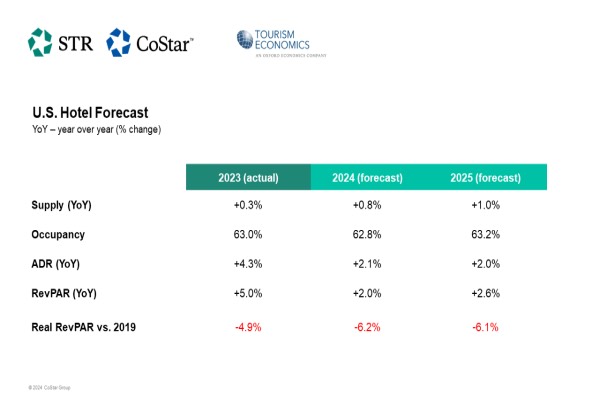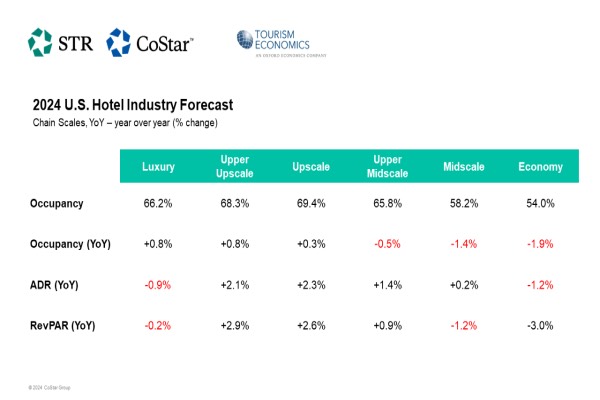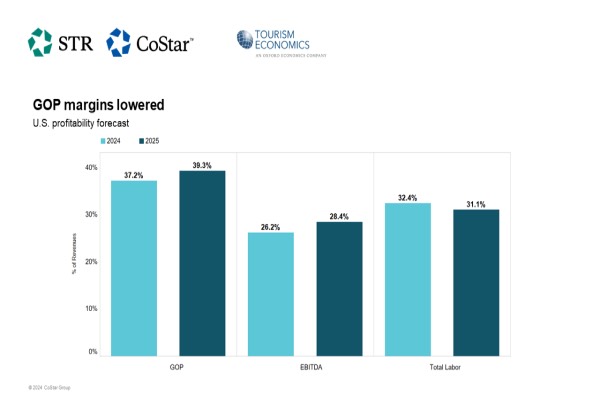STR and Tourism Economics (TE) have made major downward adjustments to the 2024-25 U.S. hotel forecast, reflecting lower-than-anticipated performance observed so far this year and decreased growth projections for the rest of the year.
For this year, projected increases in ADR and RevPAR were downgraded 1 percentage points and 2.1 percentage points, respectively. Occupancy is now expected to decrease, following the previous forecast projected YOY growth in the metric.
The occupancy growth projection was kept in place for 2025, but ADR and RevPAR were downgraded to -0.8 percentage points and -0.9 percentage points, respectively.


A bifurcation was observed during the first four months of 2024, which is not expected to die down soon, STR President Amanda Hite said in a release. The hike in cost of living is impacting lower-to-middle income families and their ability to travel, lowering the demand for hotels in the lower price category, Hite observed.
“The upscale through luxury tier is seeing healthy demand, but pricing power has waned, given changes in mix and travel patterns and to a lesser extent, economic conditions. Travel remains a priority for most Americans, but the volume has lessened as prices on goods and services continue to rise.”
Elevated operating expenses have resulted in STR forecasting lower GOP margins, Hite said. Labor costs are expected to be around 33% of total revenues the rest of this year and will have the greatest impact on GOP margins.
“Upper midscale chains are expected to maintain the lowest labor costs, and thus the most competitive GOP margins for most of 2024, which follows pre-pandemic trends,” Hite said.

Persistently inflated interest rates and easing wage growth have led to wary business investment and careful spending by middle and lower-income group consumers, Aran Ryan, director of industry studies at TE said.
Looking beyond this short-term decreased demand for lower-tier properties, TE expects moderate travel growth to resume, benefitting from a tempered economic expansion and the continued rebound of group, business and international travel.
In its previous U.S. hotel performance forecast in January, STR and TE made minimal adjustments to growth projections. Growth in ADR was raised by 0.1 percentage points, while occupancy and RevPAR were left unchanged from the last forecast. For 2025, growth projections for each of the performance metrics were downgraded on account of the long-term, average trends starting to stabilize – occupancy (-0.1 percentage points), ADR (-0.3 percentage points) and RevPAR (-0.5 percentage points).
While the economic outlook has improved, TE had said it still anticipated a deceleration in economic growth, characterized by weaker labor markets and business sector caution. Modest lodging demand growth will be supported by the prioritization of travel, a continued rebuilding of business travel and group events coupled with a rebound in international travel, Ryan had said.
